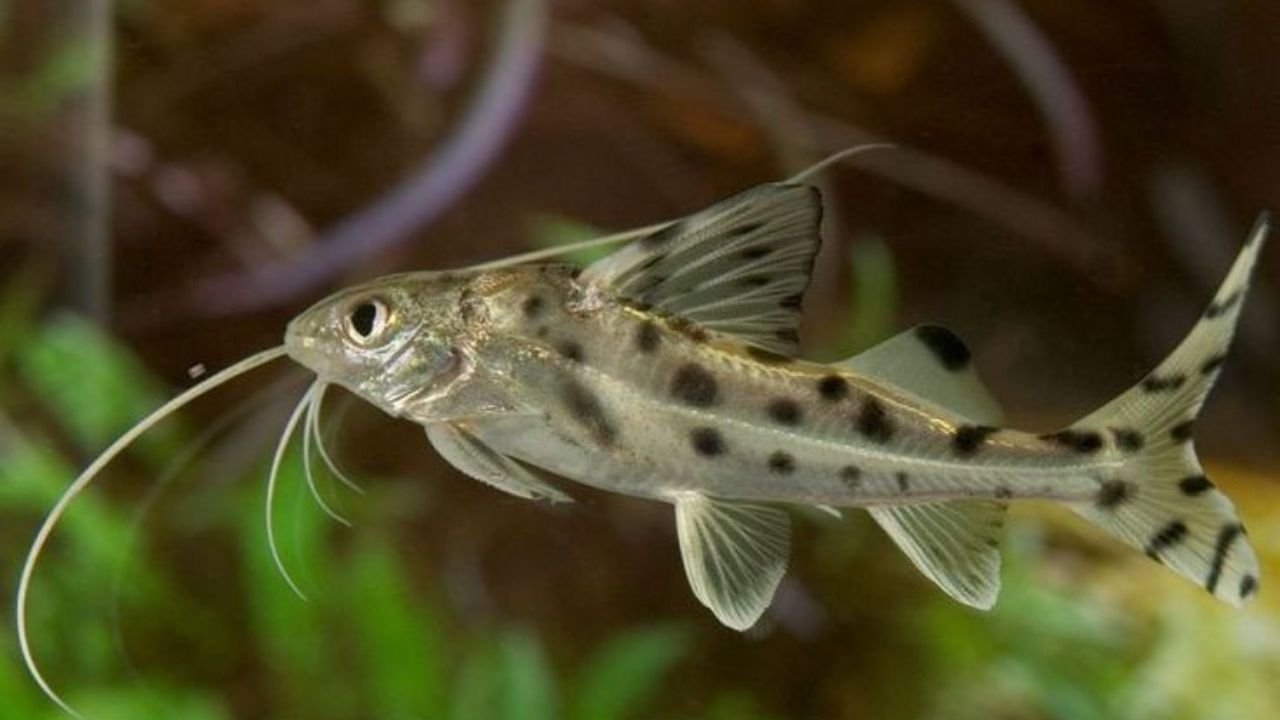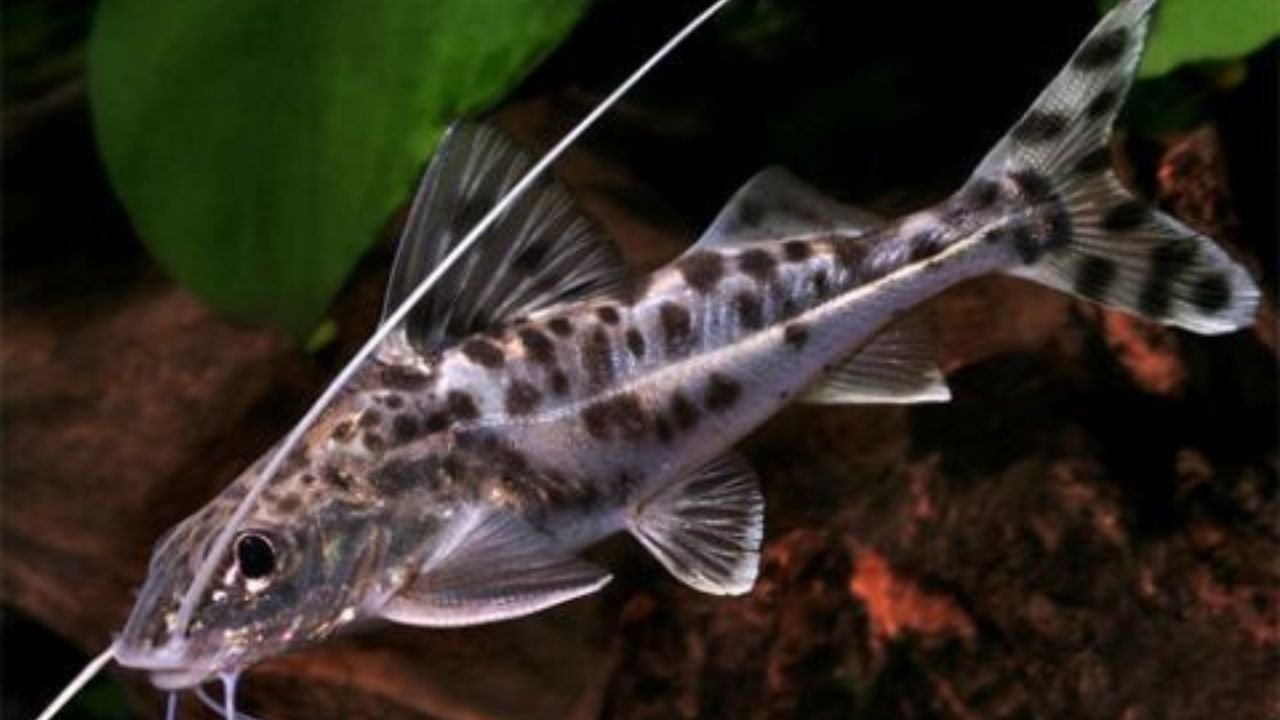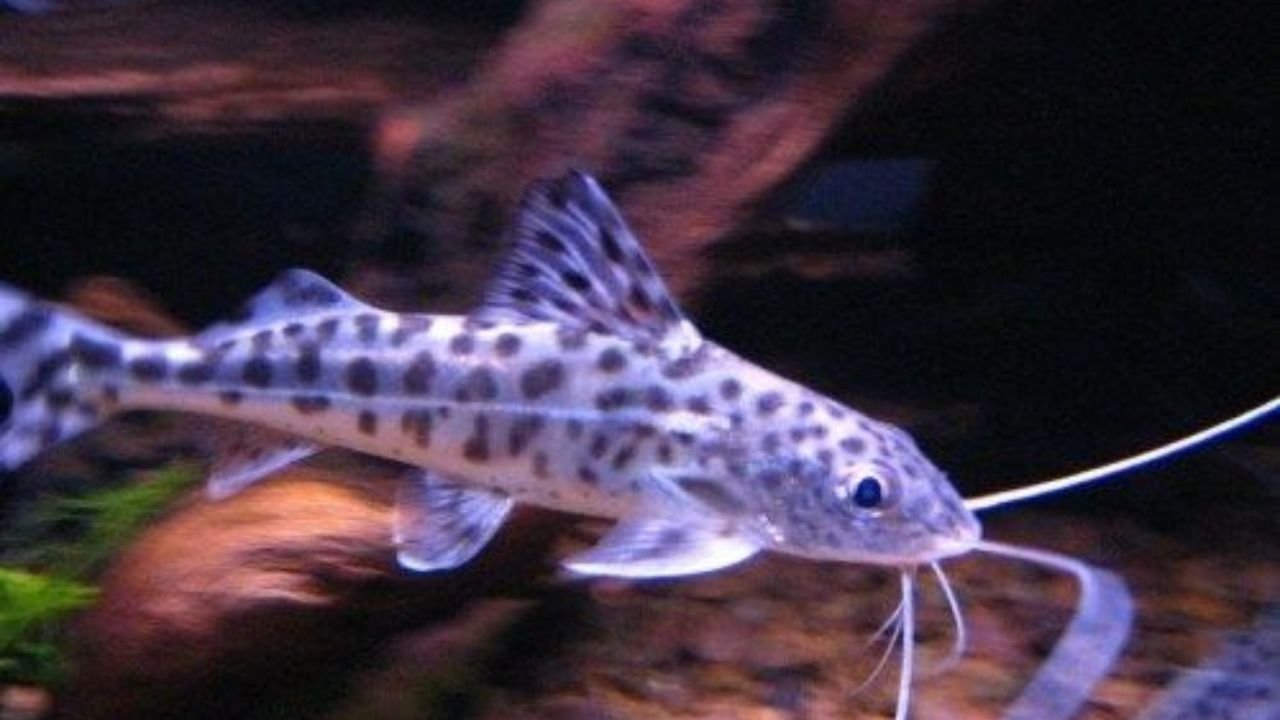Why Pictus Catfish Make Great Aquarium Pets
Pictus Catfish are fun and lively fish. They have shiny silver bodies with black spots and long whiskers. They look great in a home tank.
These fish need clean water, plenty of space to swim, and the right food. They also need friendly tank mates. This guide will help you take care of them easily.
Pictus Catfish Size
Pictus Catfish grow to about 4–5 inches long. Some may reach 6 inches, but this is rare. It depends on their genes and tank setup.
These fish love to swim fast! They zip around the tank, mostly at night, so they need a big tank to move freely.
- The Best Driftwood for Your Aquarium
- Platy Fish Care and Breeding
- 40-Gallon Breeder Tank
- Buenos Aires Tetra
- Best Filters for Small Aquariums

Pictus Catfish Lifespan
With proper care, they can live 8 to 10 years. Keep their water clean, feed them the right food, and give them calm tank mates. These things help them live a happy life.
Tank Size for Pictus Catfish
Pictus Catfish need space to swim. A 55-gallon tank is the ideal size, especially if you want more than one fish.
Tip: Do not use a short or narrow tank—these fish like to swim far and fast.
Ideal Temperature for Pictus Catfish
These tropical fish thrive in warm water. The ideal temperature range for Pictus Catfish is:
|
Parameter |
Ideal Range |
|
Water Temperature |
75°F – 81°F (24°C – 27°C) |
Make sure to use a reliable heater and thermometer to maintain stable conditions.
School Size

Do Pictus Catfish Need Companions?
Yes, they do! These fish are social and like to live in groups. Keep 3 to 6 together—it helps them feel safe and calm.
When alone, they may hide or get stressed. In a group, they swim more and seem happier.
Best Tank Mates for Pictus Catfish
Pictus Catfish eat meat but are not aggressive. They do well with fish that are the same size or larger. Make sure the other fish are calm too.
Good Tank Mates Include:
- Angelfish
- Gouramis
- Silver Dollars
- Rainbowfish
- Bristlenose Plecos
- Corydoras (caution: similar bottom zone)
Avoid These Tank Mates:
|
Compatible |
Avoid |
|
Tetras (larger species) |
Neon Tetras, Guppies |
|
Bala Sharks |
Shrimp, Snails |
|
Other Catfish |
Bettas |
Don’t put them with small or slow fish. They move fast and may chase or hurt slower fish.
Feeding Pictus Catfish
Pictus Catfish eat meat and prefer foods that are rich in protein. In nature, they eat insects, worms, and small crustaceans.
Ideal Diet Includes:
- Bloodworms
- Brine shrimp
- Sinking pellets
- Cut-up shrimp
- Blackworms
- Daphnia
Feed them once or twice a day. They live at the bottom of the tank, so use sinking food to ensure they eat enough.
Tip: Turn off the lights at night—they are most active then.

Aquarium Setup for Pictus Catfish
To mimic their natural habitat (the rivers of South America), set up your tank with:
- Sandy or smooth gravel substrate
- Plenty of hiding spots (driftwood, caves, PVC pipes)
- Low to moderate lighting
- Moderate water flow (they love current)
They’re sensitive to poor water conditions, so regular maintenance is crucial. Invest in a powerful filter, as they produce a fair amount of waste.

Male vs Female Pictus Catfish
Telling male and female Pictus Catfish apart is tricky. Unlike some species, there are no obvious color differences.
|
Male |
Female |
|
Slightly slimmer |
More rounded belly |
|
Active swimmers |
Sometimes more passive |
Only during the breeding season might subtle differences show, but in home aquariums, this is rarely observed.
Breeding Pictus Catfish
Breeding Pictus Catfish in tanks is difficult and rare. Most Pictus Catfish are wild-caught because they don’t breed easily in tanks.
Breeding Problems
- They swim fast.
- They need special water.
- It’s hard to get them to spawn in tanks.
If you want to try breeding, you will need a separate tank that matches the river conditions they live in. However, breeding them may still not be successful.
Pictus Catfish Eggs
In nature, female Pictus Catfish scatter their eggs in sandy areas or on plants, and the male fertilizes them.
- The eggs are small and sticky.
- They hatch in 3–5 days.
- The baby fish (fry) are very delicate.
In tanks, you rarely see eggs. If you do, other fish or the parents may eat them quickly.
Final Thoughts
Pictus Catfish are pretty and lively. They make big tanks more fun. If cared for properly, they live long and stay active. They need lots of room, friends, and food full of protein. These fish are not for beginners. They require clean water and can be fast hunters. But if you know fish well and have a good tank, Pictus Catfish make great pets.
FAQ
- Are Pictus Catfish aggressive?
No, they are quiet for the most part. But because they are so fast and predatory by nature, they can unintentionally stress out slower or smaller tankmates.
- Will Pictus Catfish eat other fish?
Yes—if the other fish are small enough to be eaten whole. Do not keep them with small fish such as Neon Tetras or fry.
- Do Pictus Catfish clean tanks?
They do a great job of cleaning up food scraps that sink to the bottom. However, they are not algae eaters, so don’t expect them to keep your tank clean.
- Can Pictus Catfish sting you?
They possess sharp spines along their pectoral and dorsal fins, which can produce a painful poke if not handled appropriately. It’s not poisonous, but it can be stinging and irritating.
- Are catfish peaceful?
Most aquarium catfish, including Pictus, are peaceful and social when kept with appropriate tank mates and in groups.

